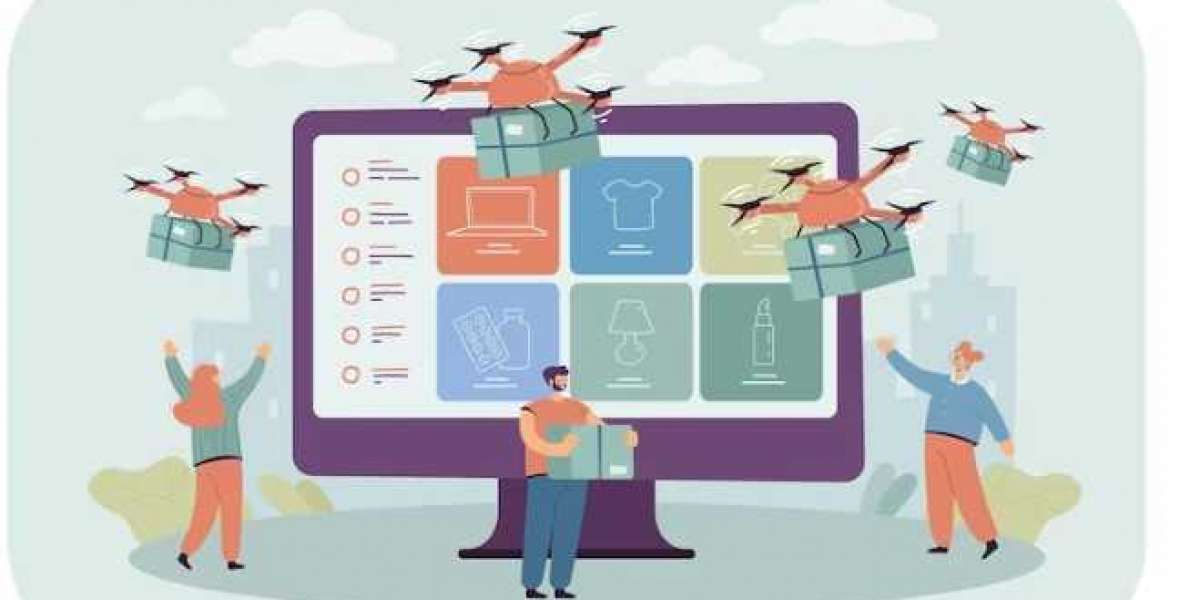The global drone software market size was USD 1,165.3 million in 2019 and is projected to reach USD 5,961.6 million by 2027, exhibiting a CAGR of 25.05% during the forecast period. Drone software refers to the various programs, algorithms, and systems that control and manage the operation of unmanned aerial vehicles (UAVs), commonly known as drones. This software plays a critical role in enabling drones to perform a wide range of tasks, from basic flight maneuvers to complex missions in various industries such as agriculture, cinematography, construction, surveying, logistics, and more.
Informational Source:
https://www.fortunebusinessinsights.com/drone-software-market-103527
Drone software encompasses both onboard and ground control components, working together to ensure safe, efficient, and accurate drone operations. Drone software represents a multifaceted ecosystem of programs, algorithms, and systems that orchestrate the operation of unmanned aerial vehicles (UAVs) across diverse industries. At its core, flight control software governs flight dynamics, stabilization, and autonomous modes, ensuring precise and stable maneuvers. Navigation software integrates satellite systems like GPS and employs advanced techniques like visual odometry for accurate positioning, while mission planning software enables dynamic flight path creation and obstacle avoidance. Data collection and processing software manage imaging devices and convert raw data into actionable formats like 3D models or orthomosaic maps. Ground control software facilitates remote piloting, telemetry monitoring, and parameter adjustment
Companies Covered in Drone Software Market are:
- Airware, Inc (U.S.)
- 3D Robotics (U.S.)
- Dreamhammer Inc. (U.S.)
- Drone Volt (France)
- DroneDeploy Inc. (U.S.)
- ESRI (U.S.)
- Pix4D(Switzerland)
- Precisionhawk Inc. (united states)
- Sensefly Ltd.(Switzerland)
- Skyward Ltd. (U.S.)
- DJI (China)
- Other Players
Communication protocols sustain seamless interaction between drones and ground stations, adhering to regulatory compliance and safety measures through features like no-fly zone enforcement and remote identification. Incorporating artificial intelligence, drones utilize software for tasks like object detection, classification, and autonomous decision-making. With open-source projects and software development kits, the drone software landscape continues to expand, offering customization and innovation to cater to evolving applications and industries.
1. Flight Control Software:
Flight control software is the core component that manages the physical control of the drone's movement. It includes algorithms for stabilization, attitude control (roll, pitch, and yaw), and autonomous flight modes. Key features of flight control software include:
- Manual Control: Allows pilots to directly control the drone's movements using a remote controller or mobile device.
- Stabilization: Algorithms ensure the drone maintains stable flight by adjusting motor speeds based on sensor data (accelerometers, gyroscopes).
- Autonomous Flight Modes: Waypoint navigation, follow-me, orbit, and other pre-programmed flight modes enable drones to fly missions without constant manual control.
2. Navigation and Positioning:
Precise navigation and positioning are crucial for many drone applications. GPS, GLONASS, Galileo, and other satellite systems are commonly used for global positioning. Software for navigation and positioning includes:
- GPS Integration: Allows drones to accurately determine their location and altitude.
- RTK (Real-Time Kinematic): Enhances GPS accuracy, crucial for applications like surveying and mapping.
- Visual Odometry and SLAM: Onboard cameras and sensors enable drones to estimate their position based on visual features and environment mapping.
- Geofencing: Defines virtual boundaries to keep drones within authorized areas and prevent unauthorized flight.
3. Mission Planning and Execution:
Drones are often deployed to complete specific missions or tasks. Mission planning software assists in creating flight paths, optimizing routes, and coordinating multiple drones for collaborative tasks. Key features include:
- Waypoint Planning: Define a sequence of GPS coordinates for the drone to follow.
- Obstacle Avoidance: Software can help drones detect and navigate around obstacles using sensors like LiDAR and depth cameras.
- Dynamic Replanning: Allows drones to adapt their flight paths in real-time based on changing conditions.
4. Data Collection and Processing:
Many drone applications involve data collection such as aerial photography, videography, LiDAR scanning, and multispectral imaging. Software in this category includes:
- Camera Control: Automates image capture, exposure settings, and camera orientation during flight.
- Data Stitching and Processing: Software processes collected data into usable formats like orthomosaic maps, 3D models, and point clouds.
5. Remote Control and Telemetry:
Ground control software is used by operators to monitor drone status, receive telemetry data (battery levels, altitude, speed), and adjust flight parameters in real-time. It often includes:
- Telemetry Displays: Real-time data visualization for monitoring flight parameters.
- Remote Piloting: Control the drone manually from a computer or mobile device through a user-friendly interface.
6. Communication and Connectivity:
Drone software relies on communication protocols to transmit commands and receive telemetry data. This includes:
- Wireless Communication: Drones use protocols like Wi-Fi, radio frequencies, and cellular networks to communicate with ground stations.
- Command and Control (C2): Communication protocols for transmitting flight commands from ground control to the drone.
7. Regulatory Compliance and Safety:
Drone operations are subject to aviation regulations and safety considerations. Software can assist with complying with airspace rules and ensuring safe flights by:
- No-Fly Zone Enforcement: Prevent drones from entering restricted areas such as airports and government buildings.
- Remote Identification: Transmitting identification information for drones in flight to aid in compliance and security monitoring.
8. Data Analysis and Visualization:
For applications like agriculture and surveying, software helps analyze collected data and present it in a meaningful way. This can include:
- GIS Integration: Combining drone-collected data with geographic information systems (GIS) for better analysis and decision-making.
- Analytics Tools: Extract insights from imagery and sensor data, such as crop health analysis or infrastructure inspection reports.
9. AI and Machine Learning:
Increasingly, drones are equipped with AI-powered features for object detection, classification, and advanced decision-making. This includes:
- Object Detection: Identifying objects like people, vehicles, and obstacles in real-time video feeds.
- Autonomous Landing and Takeoff: AI algorithms can help drones perform these tasks even in challenging conditions.
10. Software Development Kits (SDKs):
Many drone manufacturers and software developers offer SDKs that allow third-party developers to create custom applications and features for specific use cases.
11. Open Source Drone Software:
There are various open-source drone software projects that provide the community with tools for drone development, such as the ArduPilot and PX4 flight control stacks.
In conclusion, drone software is a diverse field that encompasses a wide range of functionalities, from basic flight control to advanced data analysis and autonomous navigation. As technology advances, we can expect to see even more sophisticated and specialized software solutions that cater to specific industries and use cases.








